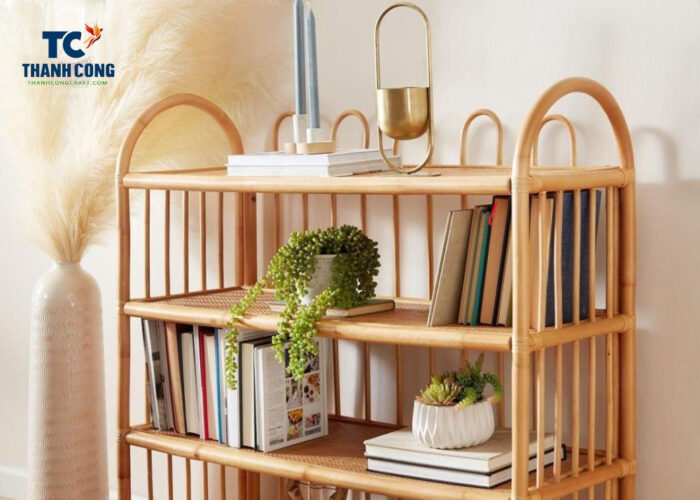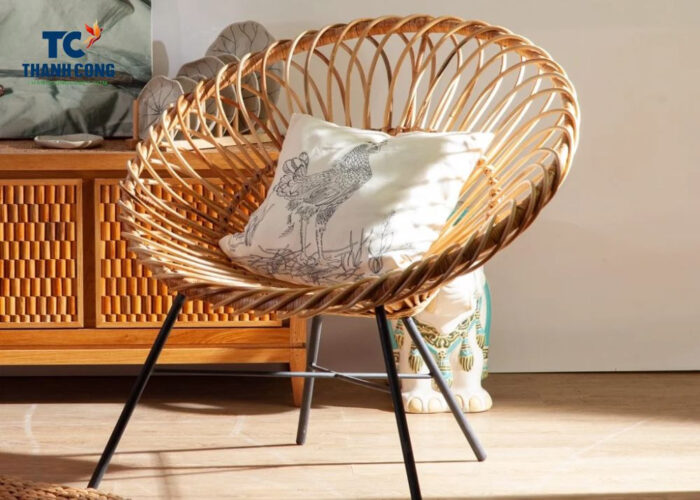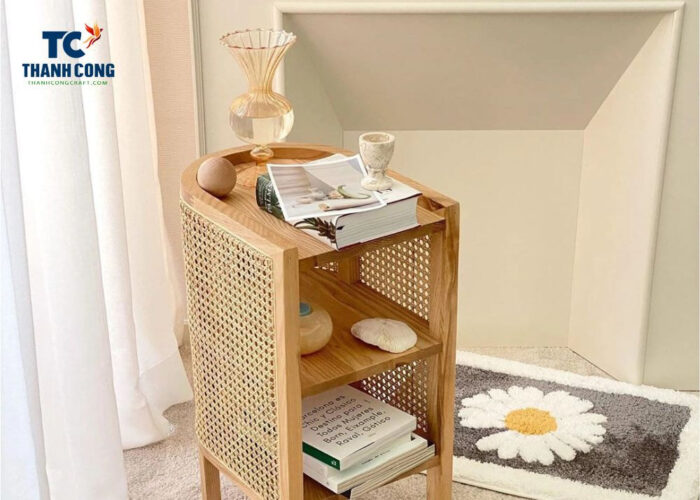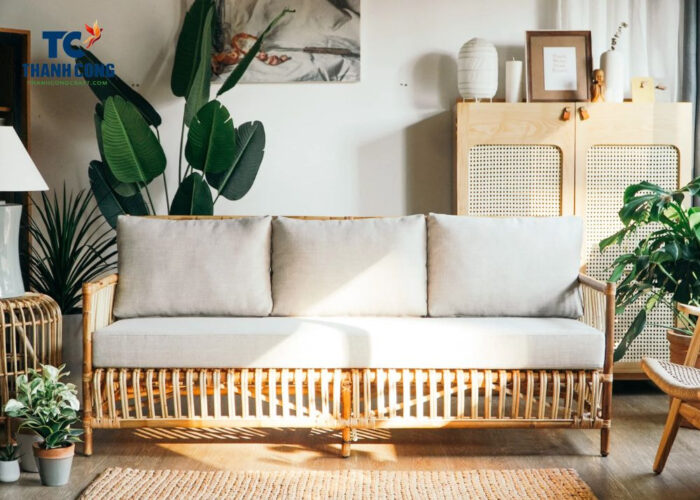Over time, furniture made from any material can begin to lose the vibrant colors it once had, so it’s no surprise that many owners of bamboo furniture turn to painting to restore its former splendor. The article below will guide you through a 13 step process for repainting bamboo furniture.
Contents [hide]
- 1. Is it Possible to Repaint Bamboo Furniture?
- 2. Guide to Repainting Bamboo Furniture
- Step 1: Remove Cushions and Unnecessary Items
- Step 2: Sand the Surface of the Bamboo
- Step 3: Clearing Residue and Brushing the Bamboo Surface
- Step 4: Thoroughly Clean the Bamboo Again
- Step 5: Place the Furniture on a Protective Surface
- Step 6: Apply Primer to the Furniture
- Step 7: Re-Sand the Bamboo Surface
- Step 8: Clean Off Any Excess Residue
- Step 9: Apply a Thin Coat of Paint to the Bamboo Surface
- Step 10: Allowing Paint to Dry
- Step 11: Applying Additional Stain Coats
- Step 12: Adding Cushions and Accents
- Step 13: Extra Tips and Clever Tricks
1. Is it Possible to Repaint Bamboo Furniture?
Certainly, bamboo furniture can be repainted, and the most convenient approach is using spray paint. Opting for spray paint saves both time and money. While traditional methods like using furniture paint and a brush are viable, they do come with certain drawbacks.

When using oil-based or furniture-specific acrylic paints, achieving a flawless finish demands meticulous attention to detail in every corner and crevice. Similar challenges arise with staining. Staining involves applying a consistent layer of oil-based paint using a brush. Just like any paint application, the hue deepens with each successive coat.
Though either of these paint methods is viable, spray paint stands out as the recommended choice for optimal outcomes. Spray painting not only ensures a smooth and uniform finish, but it also surpasses the alternatives in terms of both application speed and drying time.
Color presents the swiftest and most visually appealing route to enhancing furniture aesthetics, and when it comes to bamboo, rattan, and wicker pieces, spray paint reigns supreme. Embracing spray paint allows for a flawlessly even outcome.
2. Guide to Repainting Bamboo Furniture
Step 1: Remove Cushions and Unnecessary Items
Before repainting bamboo furniture, ensure that all cushions, fabric covers, and any surplus parts or items are removed. Typically, there are also screws and fasteners securing cushions and additional components of the furniture in place.
If you’re repainting a table, wardrobe, or similar furniture with removable bamboo parts such as drawers or handles, take them off before painting. If the drawers or handles are also made of bamboo, set them aside for painting.
Place cushions, fabric covers, and spare parts in a dry area away from the paint. Additionally, any handles or metal components attached to the furniture but not made of bamboo should be removed or covered to safeguard them from paint.
Step 2: Sand the Surface of the Bamboo
Due to bamboo’s typically smooth surface, sanding is essential to provide a suitable surface for paint adhesion. Sanding creates a slightly rough texture that makes it easier for the paint to adhere. Regardless of the type of paint used, sanding is a crucial step. Use sandpaper, preferably 120 or 150 grit, to sand the surface of the bamboo.

Please note that translating technical instructions accurately can sometimes be challenging, as terminology and specific instructions may vary. It’s recommended to have someone with expertise in both languages review the translation for precision.
Bamboo boasts undeniable beauty and a smooth texture, but it also possesses fragility. Exercise caution to avoid applying excessive force, which could potentially harm the surface or lead to splintering. Exerting too much pressure may result in surface cracks and fragment formation, especially when dealing with older or more delicate bamboo furniture.
When gently applying pressure to the bamboo, employ circular motions with sandpaper until the glossy outer layer is eliminated. If your bamboo furniture has been previously painted, take care to fully remove the paint and the glossy outer layer. Once the bamboo has been sanded, ensure that its outer surface is uniformly matte and devoid of shine.
If there is no longer any shine on the outer bamboo surface, it indicates successful removal. This step is pivotal, as paint adheres poorly to the glossy outer layer of bamboo. Opt for sandpaper as your optimal choice for this task, as electric sanding machines may prove overly aggressive and risk causing permanent damage to the bamboo. Additionally, if your furniture contains detachable bamboo components, such as cabinets and handles, similarly sand those pieces.
Step 3: Clearing Residue and Brushing the Bamboo Surface
Following the comprehensive sanding of the furniture’s glossy outer layer, employ a soft-bristle brush to eliminate any residual sawdust. Utilize the brush to meticulously cleanse hard-to-reach areas where residue is likely to accumulate. With each stroke, gently wipe or shake the brush to dislodge residue and thwart its accumulation.
For this task, a soft-bristle brush is the optimal choice, as it adeptly removes all sawdust without risk of scratching the bamboo surface. Avoid utilizing a stiff-bristle brush, which could potentially mar the bamboo’s delicate exterior.
Step 4: Thoroughly Clean the Bamboo Again
If you’ve ever sanded furniture before, you know that completely eliminating every speck of sawdust in the initial attempt is close to impossible. Consequently, giving the furniture another thorough cleaning is imperative. You can undertake an additional meticulous cleaning session using either a soft-bristle brush or a vacuum cleaner.

During this second cleaning round, it’s paramount to focus particularly on the nooks and crannies where sawdust might still be present. Especially if your bamboo furniture boasts intricate handcrafted designs or features delicate details like carvings or joints, the likelihood of hard-to-reach sawdust accumulation is higher.
When utilizing a soft-bristle brush, glide it back and forth across crevices to gather any lingering sawdust. Follow a similar process when using a vacuum cleaner. A vacuum cleaner, especially one equipped with an attachment brush designed for small crevices, can prove even more effective.
Once all the sawdust has been eradicated, gently wipe the furniture with a slightly damp cloth made of fine fibers. As mentioned earlier, completely eradicating every tiny speck of sawdust isn’t always feasible. Therefore, using a small fiber cloth will aid in removing any residual sawdust on the surface. Thoroughly dusting off the furniture one final time ensures a pristine surface for the painting procedure and plays a role in achieving a seamless, impeccable finish.
Step 5: Place the Furniture on a Protective Surface
After the furniture has thoroughly dried, position it onto a canvas or plastic drop cloth. This precautionary measure helps shield the surrounding area from any paint splatters or drips.
If not already done, consider working in a well-ventilated outdoor space, such as a garage or an open tent. Adequate ventilation is paramount and essential to prevent exposure to the potent chemicals found in the paint. Working in poorly ventilated environments can pose significant risks and potentially lead to harmful consequences.
Step 6: Apply Primer to the Furniture
Prior to painting, ensure you’re equipped with personal protective gear to safeguard yourself from the paint. This can be achieved by wearing safety goggles and a mask that covers your face, providing protection against inhalation of the strong paint chemicals.
The safety goggles should provide full coverage for your eyes, while the mask should completely shield your nose and mouth. Optionally, you can opt for disposable coveralls or attire to safeguard exposed areas of your body, including your hands and feet. Once properly attired, proceed to apply primer to the furniture. Much like the base coat you might use before applying nail polish, furniture primer establishes an ideal surface for the paint to adhere uniformly.

After you’ve applied a thin layer of primer to the furniture, wait approximately 30 minutes to an hour for it to dry completely. If you’re unsure whether the primer has fully dried, lightly touch the surface with your fingertip to check. If any primer comes off onto your finger, wait an additional 30 minutes before proceeding to paint.
If you’re using a brush-on primer, the process is quite similar to spray-on primer. Brush-on primer takes a bit more time, around an hour. Dip an oil-based brush into the primer and apply an even coat over the entire bamboo furniture. Let it dry for one to two hours afterward.
Step 7: Re-Sand the Bamboo Surface
- If you’ve applied primer to the furniture, it’s necessary to re-sand it. I know, all that previous sanding work seems counterproductive, but trust me, you’ll want to sand the primer layer for the best results!
- However, all your efforts aren’t in vain. The primer prepares the bamboo and ensures an even coverage of paint after you finish.
- This time, use 220-grit sandpaper, rubbing a small square of sandpaper gently over the bamboo surface in small circular motions. Continue to rub the furniture until the bamboo has a smooth texture.
Step 8: Clean Off Any Excess Residue
After thoroughly sanding the outer layer of primer on the furniture, clean it using a small fiber cloth. Dampen the cloth with warm water and wring it out. Gently wipe away any excess residue or lingering sawdust from the surface of the furniture and repeat this step once more.

Step 9: Apply a Thin Coat of Paint to the Bamboo Surface
Now that you’ve selected your paint, color, and everything else, it’s time for the moment of truth… Painting!
If you’re staining the furniture, apply a thin layer of stain using an oil-based brush to cover the entire outer surface of the bamboo. If you notice any drips, gently wipe them away with a small fiber cloth. A similar process applies if you’re using traditional furniture paint.
Step 10: Allowing Paint to Dry
Paint takes a bit longer to dry than primer – up to two hours! After you’ve applied an even layer of paint onto the furniture, wait a maximum of two hours before applying a second coat.
For traditional furniture paint, wait approximately one to one and a half hours before adding the second coat, and around 30 minutes if using spray paint.
No matter which method you’ve chosen, gently tap the furniture with a pointed object to test its dryness. If you notice any paint residue on your fingertip, wait another 15 minutes or so to ensure the furniture dries completely.
Step 11: Applying Additional Stain Coats
If you’re staining the furniture, you can apply a second coat after two hours. The more coats of stain you apply, the richer the color will become. Once you’re content with the stain’s hue, allow it to dry fully before proceeding.
Bamboo takes approximately eight hours to fully absorb the stain’s color. Since the color permeates the bamboo’s surface, unlike paint which sits atop, the drying process takes considerably longer.
Once the stain is completely dry and the challenging eight-hour wait has elapsed, you can finalize your furniture with a glossy topcoat. Reuse the same brush you employed for applying the stain after giving it a thorough wash.
Remember to allow each coat of paint to dry before applying the next one to achieve consistent color on your bamboo furniture. Whether using traditional furniture paint or spray paint, ensure your furniture is entirely dry for at least one to two hours before using.
Step 12: Adding Cushions and Accents
Now comes the fun part! Embellish your furniture with your preferred cushions, upholstery, or accents. After your bamboo furniture is entirely dry, you’re free to add any desired enhancements and detachable components if necessary.
If you’ve taken apart screws, handles, or similar components from your bamboo furniture, be sure to put them back together. You wouldn’t want your efforts to be wasted due to damaged pieces!
Step 13: Extra Tips and Clever Tricks
Not every process is a one-size-fits-all solution, so it’s crucial to provide alternative ideas and steps as needed to maximize your time and effort. Here are some additional tips and clever tricks to achieve the best outcomes when refurbishing your bamboo furniture.
- If sanding isn’t your preferred method for preparing the exterior of your bamboo furniture before painting, you can opt for a scraping and scrubbing technique. Use a putty knife for scraping and a wire brush for scrubbing. While these alternatives may not offer the same uniform finish as sandpaper, they can still be effective.
- Scraping with a putty knife is particularly handy for bamboo furniture with peeling or flaking paint. You can even interchange between these methods. Try scraping off the loose paint and then use sandpaper for a smooth, consistent surface.
- For bamboo furniture owners who want to minimize leftover sawdust from sanding, you can skip the meticulous dusting step or use a vacuum cleaner. This approach might help you remove debris from hard-to-reach spots on your bamboo furniture.
Remember, adaptability is crucial, and these additional techniques can be adjusted to match your preferences and the specific condition of your bamboo furniture, resulting in impressive final results.
If you have any further questions, don’t hesitate to send thanhcongcraft an email us at info@thanhcongcraft.com or message us at WhatsApp: +84967485411. Hope to serve you soon! Best regard!
Check out:


